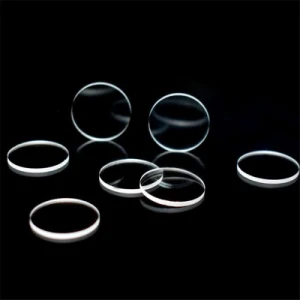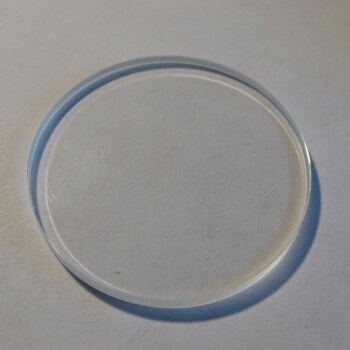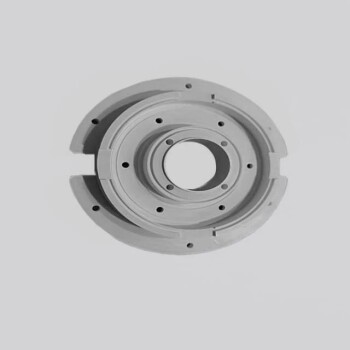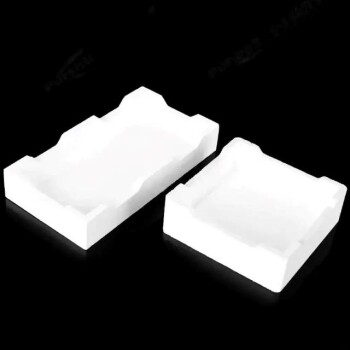
Optical Materials
High Temperature Resistant Optical Quartz Glass Sheet
Item Number : KTOM-HTR
Price varies based on specs and customizations
- Diameter
- 0.2-1000mm
- Thickness
- 0.1-500mm
- Transparency
- >95%
- Pureness
- >99.99%

Shipping:
Contact us to get shipping details Enjoy On-time Dispatch Guarantee.
Why Choose Us
Reliable PartnerEasy ordering process, quality products, and dedicated support for your business success.
Optical glass sheets
Crafted with meticulous precision, optical glass sheets are meticulously composed of a harmonious blend of handpicked raw materials. Silica, borates, phosphates, fluorides, and rare-earth elements are expertly fused at exceptionally high temperatures, resulting in a molten glass mixture. Through intricate techniques such as rolling, casting, or drawing, these mixtures are skillfully shaped into flawlessly refined sheets. Imposing strict quality control measures, the manufacturing process guarantees adherence to rigorous optical standards and the manifestation of desired optical characteristics.
Detail & Parts





Advantages of Optical Glass Plates
- High Optical Quality: Optical glass plates offer excellent optical clarity and transparency, ensuring minimal distortion and high light transmission.
- Tailored Refractive Index: Optical glass plates can be manufactured with specific refractive indices to meet precise optical requirements. This allows for the creation of lenses, prisms, and other optical components with desired light manipulation properties.
- Broad Spectral Range: Optical glass plates are designed to transmit light across a wide range of wavelengths, from ultraviolet (UV) to infrared (IR). This versatility makes them suitable for various applications in diverse fields such as spectroscopy, imaging, and laser technology.
- Mechanical Stability: Optical glass plates exhibit excellent mechanical stability and dimensional accuracy. They can withstand environmental stressors, temperature fluctuations, and physical handling without significant deformation or degradation, ensuring long-term reliability.
Applications of Optical Glass Plates
- Lenses and Optics: These plates possess exceptionally precise optical properties, including refractive index and dispersion, which play a pivotal role in facilitating the manipulation and focusing of light.
- Prisms and Reflectors: Optical glass plates play a vital role in the creation of prisms and reflectors utilized in a diverse range of applications such as spectroscopy, beam steering, and optical measurement systems.
- Filters and Polarizers: Filters selectively transmit or obstruct specific wavelengths of light, offering functionalities such as color filtering, control of light intensity, and spectral analysis. On the other hand, polarizers, by modifying the polarization state of light, find widespread applications in LCD displays, photography, and optical communication systems.
Provide customized services
Through the implementation of innovative and state-of-the-art melting processes, we have acquired extensive expertise in the development and manufacture of quality glass products, offering a wide range of optical glass products for a variety of commercial, industrial and scientific applications. The company provides various specifications of optical glass such as raw glass, cut parts and finished components, and cooperates closely with customers to customize products according to customer needs. With an unwavering commitment to quality, we ensure our customers receive the perfect solution tailored to their requirements.
For further quotations, please contact us.
FAQ
What Are The Main Types Of Glass Substrates?
What Is Optical Glass Used For?
What Is Soda-lime Glass Used For?
What Is The Composition Of Optical Glass?
What Are The Advantages Of Using Sapphire Substrates?
What Are The Most Common Optical Glasses?
Why Is Boroaluminosilicate Glass Suitable For Laboratory Glassware And Cooking Utensils?
What Are The Applications Of Optical Quartz Glass Sheets?
What Makes K9 Glass Special?
What Is A CaF2 Window Used For?
What Are The Properties Of Magnesium Fluoride Crystal Substrates?
What Is Silicon Used For In The Near-infrared Range?
What Are Glass Vibration Beads Used For In Laboratories?
4.8
out of
5
I was impressed with the remarkable ultraviolet transmission of the fused quartz. It's perfect for optical devices like lenses.
4.9
out of
5
The quartz tubes and rods are highly versatile. They're perfect for sight glasses, level gauges, and even CVD procedures.
4.7
out of
5
The optical clarity and chemical purity of the fused quartz are simply outstanding. It's a must-have for precision mirror substrates.
4.8
out of
5
The corrosion resistance of the quartz glass is truly impressive. It withstands harsh chemicals and temperatures like a champ.
4.9
out of
5
The fused quartz has remarkable properties. Its high chemical purity and resistance make it ideal for modern instruments.
4.7
out of
5
The optical glass sheets are crafted with precision. They offer excellent clarity and minimal distortion, making them perfect for various applications.
4.8
out of
5
The optical glass plates are versatile. Their broad spectral range makes them suitable for diverse fields like spectroscopy and laser technology.
4.9
out of
5
The lenses and optics made from these optical glass plates are exceptional. They provide precise light manipulation and focusing.
4.7
out of
5
The filters and polarizers made from these optical glass plates are top-notch. They offer precise control over light transmission and polarization.
4.8
out of
5
The high temperature resistance of the optical quartz glass sheet is remarkable. It's perfect for applications involving high temperatures.
4.9
out of
5
The optical glass plates are incredibly durable. They withstand environmental stressors and temperature fluctuations without any issues.
4.7
out of
5
The precision and accuracy of the optical glass plates are unmatched. They meet rigorous optical standards and deliver desired optical characteristics.
4.8
out of
5
The optical glass sheets are highly versatile. They can be tailored to specific refractive indices, making them suitable for various applications.
4.9
out of
5
The optical glass plates offer exceptional optical quality. They provide minimal distortion and high light transmission, ensuring accurate results.
4.7
out of
5
The optical glass plates are mechanically stable. They can withstand physical handling and environmental stressors without compromising their integrity.
4.8
out of
5
The optical glass plates are a great value for the price. They offer exceptional quality and performance at a reasonable cost.
4.9
out of
5
The optical glass plates are truly innovative. They incorporate advanced technologies to deliver superior optical performance.
REQUEST A QUOTE
Our professional team will reply to you within one business day. Please feel free to contact us!
Related Products

Tungsten and molybdenum crucibles are commonly used in electron beam evaporation processes due to their excellent thermal and mechanical properties.

Advanced Engineering Fine Ceramics Boron Nitride (BN) Ceramic Parts
Boron nitride ((BN) is a compound with high melting point, high hardness, high thermal conductivity and high electrical resistivity. Its crystal structure is similar to graphene and harder than diamond.

Zirconia Ceramic Gasket Insulating Engineering Advanced Fine Ceramics
Zirconia insulating ceramic gasket has high melting point, high resistivity, low thermal expansion coefficient and other properties, making it an important high temperature resistant material, ceramic insulating material and ceramic sunscreen material.

In the journey of scientific exploration and industrial production, every detail is crucial. Our arc-shaped alumina ceramic crucibles, with their excellent high temperature resistance and stable chemical properties, have become a powerful assistant in laboratories and industrial fields. They are made of high-purity alumina materials and manufactured through precision processes to ensure excellent performance in extreme environments.

1400℃ Laboratory Quartz Tube Furnace with Alumina Tube Tubular Furnace
Looking for a tube furnace for high-temperature applications? Our 1400℃ Tube Furnace with Alumina Tube is perfect for research and industrial use.

1700℃ Laboratory Quartz Tube Furnace with Alumina Tube Tubular Furnace
Looking for a high-temperature tube furnace? Check out our 1700℃ Tube Furnace with Alumina Tube. Perfect for research and industrial applications up to 1700C.

High Purity Pure Graphite Crucible for Evaporation
Vessels for high temperature applications, where materials are kept at extremely high temperatures to evaporate, allowing thin films to be deposited on substrates.

Electron Beam Evaporation Coating Conductive Boron Nitride Crucible BN Crucible
High-purity and smooth conductive boron nitride crucible for electron beam evaporation coating, with high temperature and thermal cycling performance.

400-700nm Wavelength Anti Reflective AR Coating Glass
AR coatings are applied on optical surfaces to reduce reflection. They can be a single layer or multiple layers that are designed to minimize reflected light through destructive interference.

Hexagonal Boron Nitride HBN Ceramic Ring
Boron nitride ceramic (BN) rings are commonly used in high temperature applications such as furnace fixtures, heat exchangers and semiconductor processing.

Custom Boron Nitride (BN) Ceramic Parts
Boron nitride (BN) ceramics can have different shapes, so they can be manufactured to generate high temperature, high pressure, insulation and heat dissipation to avoid neutron radiation.

Advanced Engineering Fine Ceramics Alumina Ceramic Saggar for Fine Corundum
Alumina sagger products have the characteristics of high temperature resistance, good thermal shock stability, small expansion coefficient, anti-stripping, and good anti-powdering performance.
Related Articles

Optical Quartz Plate: A Comprehensive Guide to Applications, Specifications, and Usage
Discover the versatility of optical quartz plates, exploring their uses in various industries, key specifications, and factors that differentiate them from glass. Gain insights into their applications in ultraviolet transmission, precision optics, and more.

Unveiling the Exceptional Properties and Applications of Optical Quartz Plates
Discover the remarkable characteristics and diverse applications of optical quartz plates, including their superior ultraviolet transmission, thermal stability, and use in lenses, lighting devices, and semiconductor manufacturing.

Unlocking the Power of Optical Quartz Plates: Applications and Benefits
Delve into the world of optical quartz plates, exploring their exceptional properties, diverse applications in industries like optics, electronics, and more. Discover their advantages, including low thermal expansion, high temperature resistance, and precise optical clarity.

Glassware vs. Plasticware - Which is the Better Choice for Your Needs?
Both glassware and plasticware have their own advantages and disadvantages, and the choice between the two will depend on the specific needs of your laboratory.

Comprehensive Guide to Atmosphere Furnaces: Types, Applications, and Benefits
Explore the world of atmosphere furnaces with our detailed guide. Learn about their types, applications in metallurgy and beyond, and the benefits they offer for precise material heat treatment.

A Step-by-Step Guide to Cleaning Laboratory Glassware
Maintaining clean and sterile glassware is crucial in any laboratory setting. Not only is it important for the accuracy and reliability of experiments, it is also essential for the safety of those working in the lab.

Understanding Quartz Electrolytic Cells: Applications, Mechanisms, and Advantages
Explore the detailed workings, applications, and benefits of quartz electrolytic cells in various industries. Learn how these cells facilitate precise chemical reactions and their role in high-purity metal production.

How to Save Money When Buying a Rotary Evaporator (Rotavapor)
A rotary evaporator, also known as a rotavapor, is a laboratory equipment commonly used to remove solvents from a sample. It works by rotating the sample flask to create a thin film of the solvent, which is then evaporated.

Unveiling the Versatility of Heated Lab Presses: A Comprehensive Guide
Explore the world of Heated Lab Presses, delving into their types, applications, key features, safety measures, and maintenance tips. Discover how these versatile tools empower laboratories across diverse industries.

Why PECVD is Essential for Microelectronic Device Fabrication
PECVD (Plasma-Enhanced Chemical Vapor Deposition) is a popular thin film deposition technique used in microelectronics device fabrication.

How To Clean Laboratory Glassware - Part 2
How To Clean Laboratory Glassware? Here are some considerations and tips.

Exploring the Fundamentals of Good Laboratory Practice: Ensuring Quality, Integrity, and Safety in Scientific Research